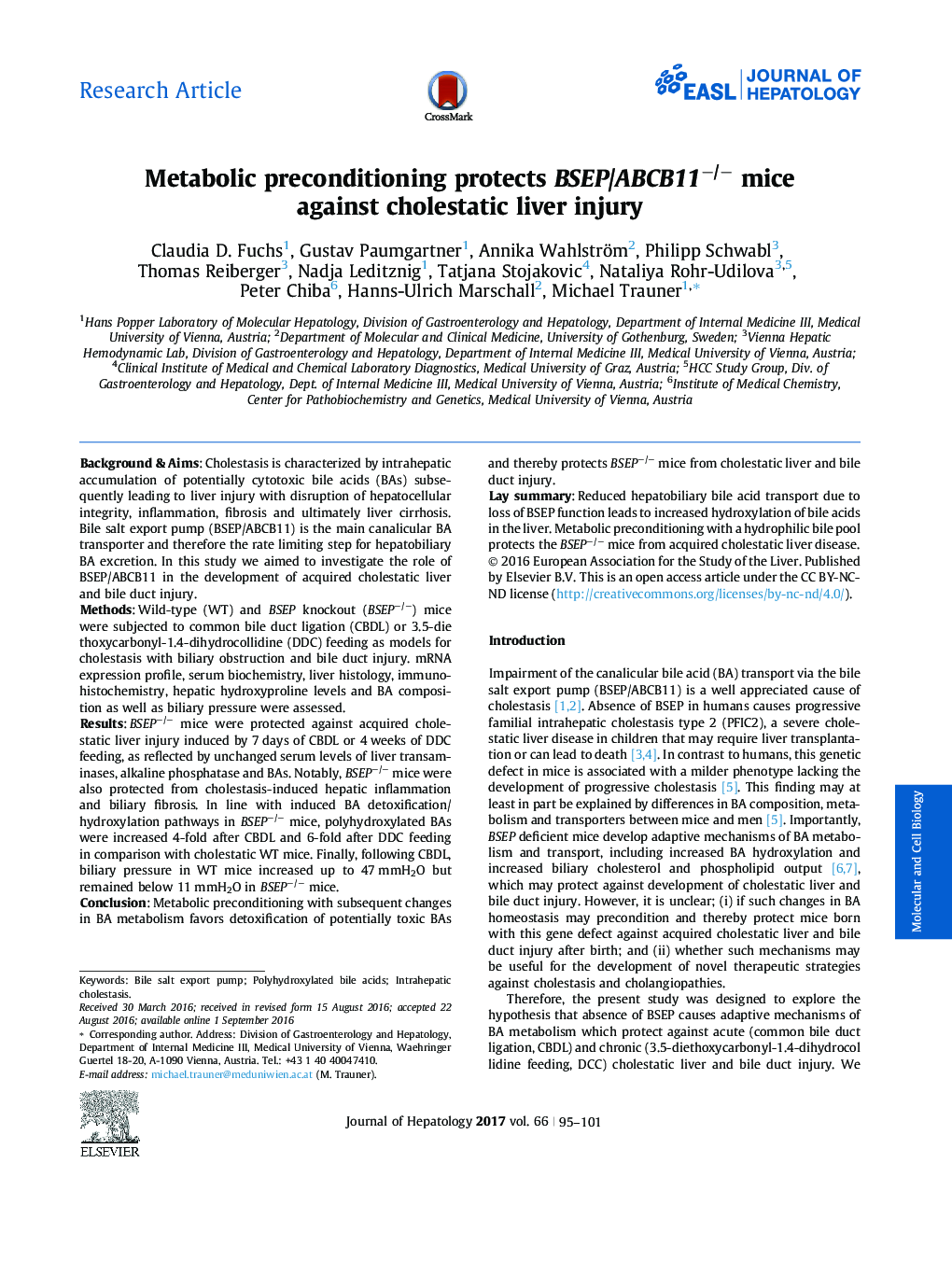| کد مقاله | کد نشریه | سال انتشار | مقاله انگلیسی | نسخه تمام متن |
|---|---|---|---|---|
| 5660442 | 1407490 | 2017 | 7 صفحه PDF | دانلود رایگان |

Background & AimsCholestasis is characterized by intrahepatic accumulation of potentially cytotoxic bile acids (BAs) subsequently leading to liver injury with disruption of hepatocellular integrity, inflammation, fibrosis and ultimately liver cirrhosis. Bile salt export pump (BSEP/ABCB11) is the main canalicular BA transporter and therefore the rate limiting step for hepatobiliary BA excretion. In this study we aimed to investigate the role of BSEP/ABCB11 in the development of acquired cholestatic liver and bile duct injury.MethodsWild-type (WT) and BSEP knockout (BSEPâ/â) mice were subjected to common bile duct ligation (CBDL) or 3.5-diethoxycarbonyl-1.4-dihydrocollidine (DDC) feeding as models for cholestasis with biliary obstruction and bile duct injury. mRNA expression profile, serum biochemistry, liver histology, immunohistochemistry, hepatic hydroxyproline levels and BA composition as well as biliary pressure were assessed.ResultsBSEPâ/â mice were protected against acquired cholestatic liver injury induced by 7Â days of CBDL or 4Â weeks of DDC feeding, as reflected by unchanged serum levels of liver transaminases, alkaline phosphatase and BAs. Notably, BSEPâ/â mice were also protected from cholestasis-induced hepatic inflammation and biliary fibrosis. In line with induced BA detoxification/hydroxylation pathways in BSEPâ/â mice, polyhydroxylated BAs were increased 4-fold after CBDL and 6-fold after DDC feeding in comparison with cholestatic WT mice. Finally, following CBDL, biliary pressure in WT mice increased up to 47Â mmH2O but remained below 11Â mmH2O in BSEPâ/â mice.ConclusionMetabolic preconditioning with subsequent changes in BA metabolism favors detoxification of potentially toxic BAs and thereby protects BSEPâ/â mice from cholestatic liver and bile duct injury.Lay summaryReduced hepatobiliary bile acid transport due to loss of BSEP function leads to increased hydroxylation of bile acids in the liver. Metabolic preconditioning with a hydrophilic bile pool protects the BSEPâ/â mice from acquired cholestatic liver disease.
182
Journal: Journal of Hepatology - Volume 66, Issue 1, January 2017, Pages 95-101